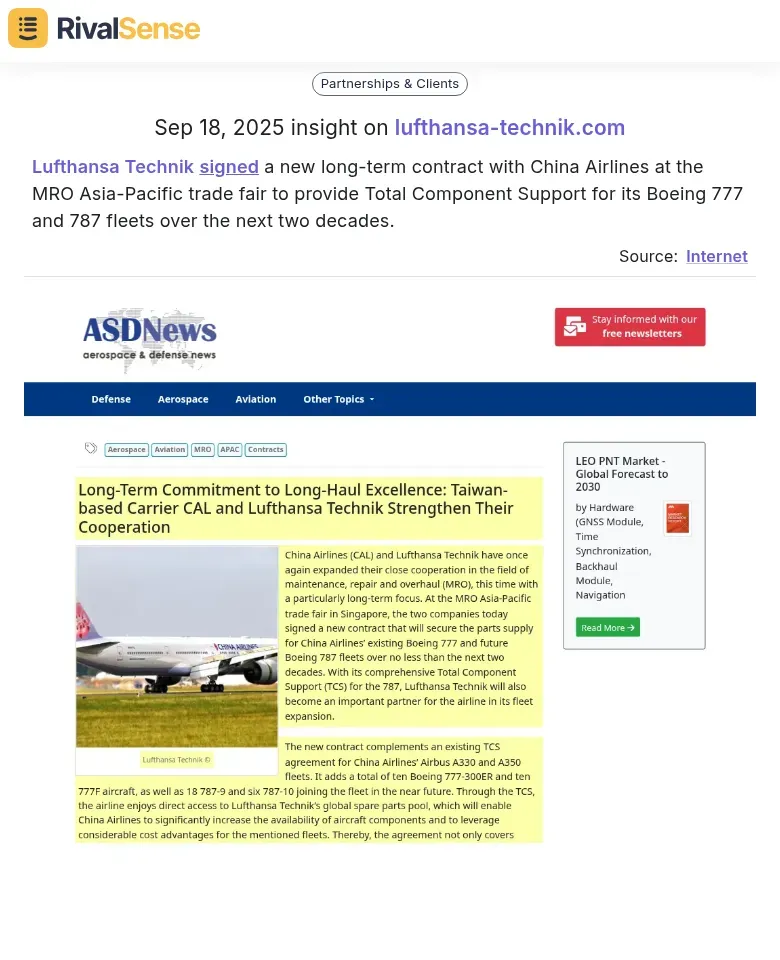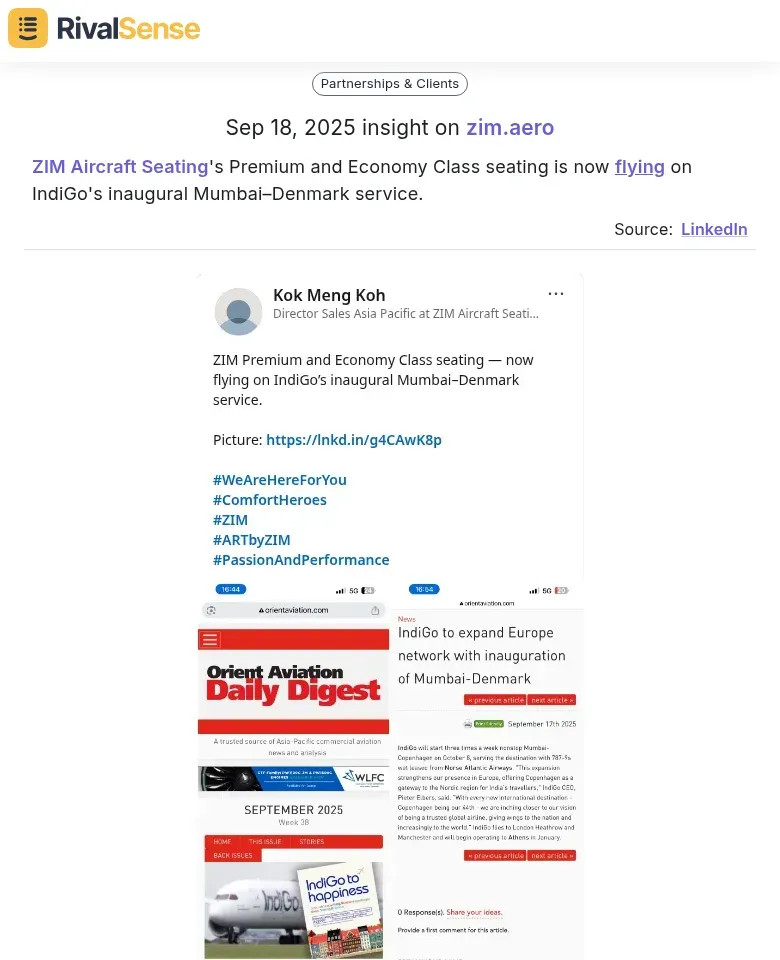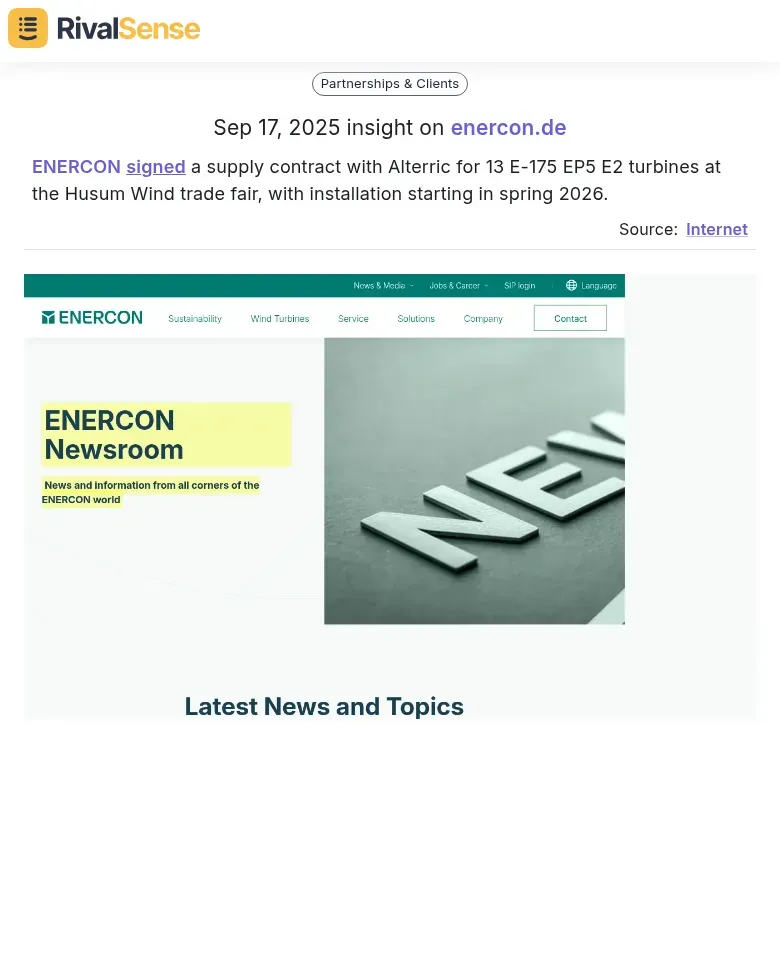Beginner's Guide to Competitor Partnership & Client Insights: Turn Intelligence Into Strategy
In today's competitive B2B landscape, tracking competitor partnerships and client relationships isn't just surveillance—it's strategic intelligence that reveals market goldmines. These alliances serve as mirrors to emerging trends, exposing gaps and opportunities you can exploit. By analyzing who your competitors partner with and which clients they serve, you uncover insights into new technologies, untapped markets, and potential collaboration avenues that could redefine your competitive edge.
Practical Steps to Get Started:
- Map key competitors and their known partners/clients using LinkedIn and industry reports
- Track partnership announcements for patterns indicating market trends
- Analyze relationship types: tech integrations, co-marketing, or supply chain collaborations
- Benchmark outcomes against your capabilities to identify gaps
Quick Checklist: ✅
- Identify 3 efficiency-boosting tech partners competitors use
- Analyze 5 competitor success stories for quantifiable metrics
- Draft partnership criteria based on competitor best practices
- Monitor alliance frequency to gauge market velocity
Transform these insights into actionable advantages by anticipating trends before they mainstream and identifying partnership targets that align with emerging opportunities.
Analyzing Long-Term Strategic Partnerships
Analyzing long-term strategic partnerships reveals critical insights about market commitment and stability. Multi-decade contracts signal deep market confidence and financial stability—learn from these to assess competitor risk tolerance and investment horizons. Trade fairs and industry events are prime partnership launchpads where major deals are often announced.

Example: Lufthansa Technik signed a 20-year contract with China Airlines at MRO Asia-Pacific—this type of long-term partnership insight reveals market confidence and helps you gauge competitor stability and investment horizons.
Fleet-wide or large-scale support agreements indicate scalability potential. Analyze contracts covering entire operations, as they show operational efficiency and growth capacity. Checklist: Review contract durations, geographic coverage, and service levels to gauge scalability. For instance, fleet management partnerships that include 24/7 support and regular servicing highlight robust infrastructure worth emulating.
Gaining Insights from Product Integration and Co-Branding
Product integrations and co-branding partnerships offer powerful windows into competitor strategies. When analyzing integrations with major carriers or platforms, examine the geographic coverage and service tiers included—this reveals market penetration priorities and target customer segments.

Example: ZIM Aircraft Seating's seating now flies on IndiGo's inaugural Mumbai-Denmark service—product integration insights like this reveal market entry timing and help you understand competitor expansion patterns and customer targeting.
Inaugural partnerships provide timing intelligence. Track when competitors announce their first major integrations—this often signals market entry or expansion phases. Companies typically launch partnerships during growth cycles or before major product releases to maximize impact.
Practical checklist: ✅
- Map all integration partners by service level and geography
- Track announcement timing relative to product launches
- Analyze which customer segments each partnership serves
- Monitor partnership duration for strategic commitment signals
- Compare integration depth—API level vs. basic connectivity
Decoding Supply Contracts and Installation Timelines
Future-dated installation schedules reveal market expansion patterns and capacity planning. Analyze competitor delivery timelines to forecast regional growth—clustered installations suggest market confidence in specific geographies and help you anticipate competitor resource allocation.

Example: ENERCON signed a supply contract for 13 turbines with installation starting spring 2026—supply contract insights provide visibility into competitor capacity planning and help you anticipate their market movements and resource allocation.
Supply agreements provide capacity intelligence: track contract sizes and durations—long-term contracts signal stable demand and production scaling. Practical steps:
- Monitor regulatory filings and press releases for installation dates
- Compare contract volumes against historical capacity data
- Note payment terms—upfront investments indicate strong market belief
- Track supplier diversity: multiple partners may indicate capacity constraints
Use installation backlog analysis to predict quarterly market share shifts. A competitor with 12-month full schedules likely has superior operational efficiency worth studying.
Practical Framework for Monitoring and Analysis
Establishing systematic partnership tracking starts with creating a monitoring framework. Set up alerts for competitor names + "partnership" keywords, and use automated tools to detect announcements across press releases, social media, and industry publications. Create a centralized dashboard with these key metrics: partnership frequency, partner quality, geographic expansion patterns, and market segment penetration.
Develop impact measurement by tracking both quantitative and qualitative metrics. Quantitative: revenue attribution from partnered deals, customer acquisition cost reduction, and market share shifts. Qualitative: brand perception changes, competitive positioning strength, and innovation pipeline enhancements from collaborations.
Build actionable intelligence dashboards with real-time alerts for new partnerships, trend analysis showing partnership clusters by industry vertical, and predictive analytics for partnership outcomes. Include competitor comparison matrices showing partnership gaps and opportunities.
Conclusion: Turning Insights into Competitive Advantage
To transform competitive insights into sustainable advantage, implement quarterly competitive intelligence reviews integrated into your strategic planning cycle. Start by establishing a cross-functional CI team that meets monthly to analyze competitor movements, partnership announcements, and client wins.
Leverage partnership patterns as early warning signals—track when competitors form new alliances, as these often precede market expansions or product launches. Create a partnership monitoring dashboard that flags unusual activity patterns, enabling proactive response rather than reactive catch-up.
Build institutional capabilities by developing a centralized competitor intelligence repository accessible to all decision-makers. Implement automated monitoring tools that track competitor websites, social media, and news mentions. Train teams to systematically gather field intelligence, creating a continuous feedback loop.
Ready to transform competitor intelligence into strategic advantage? Try RivalSense for free and get your first competitor report today—track partnership announcements, product launches, pricing changes, and market movements automatically delivered in weekly reports.
📚 Read more
👉 CyberGhost VPN's Pricing Strategy Shift: A Competitor Analysis Deep Dive
👉 Key Account Management Models: The Ultimate 2025 Guide
👉 5 Game-Changing PR Key Account Sales Tracking Hacks for 2025
👉 How Real-Time Executive Intelligence Drives Acquisition Strategy: CrowdStrike Case Study
👉 Facebook Competitor Insights: Strategic Mapping for Business Advantage
